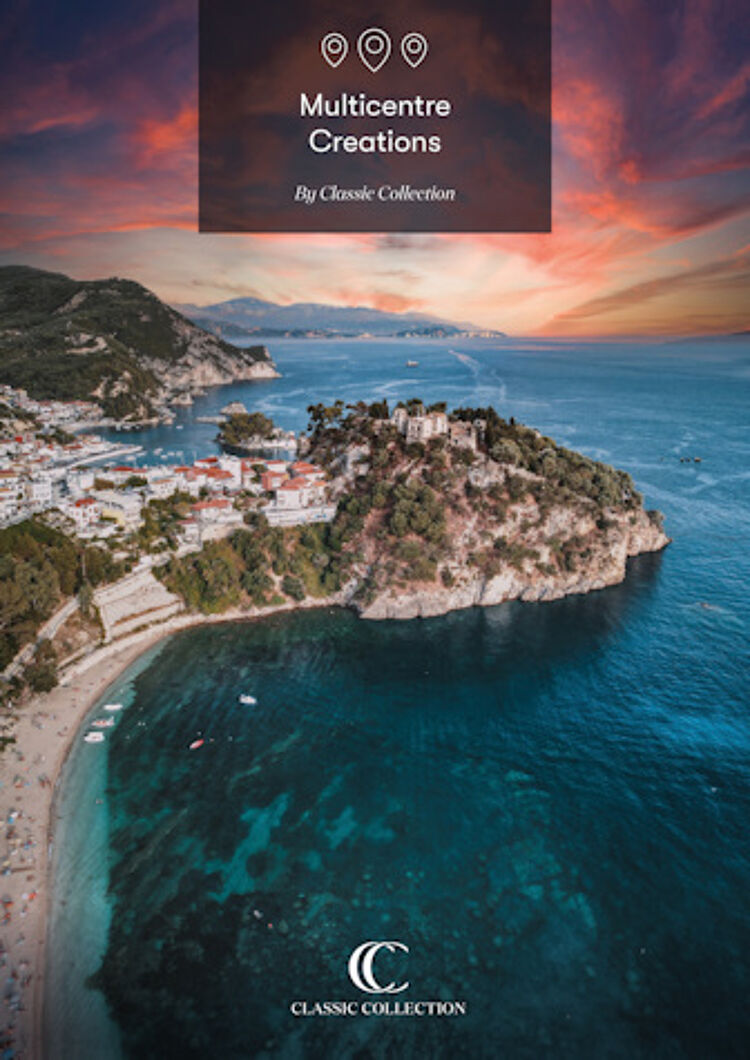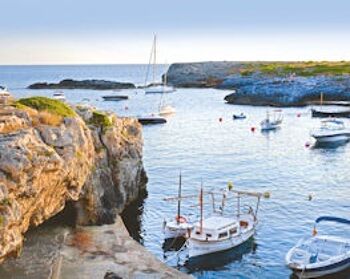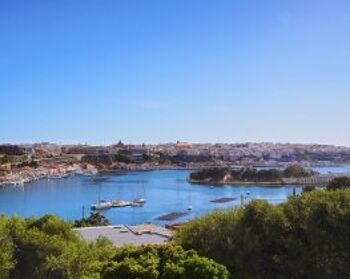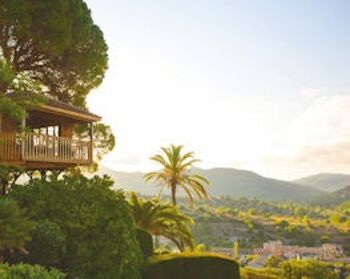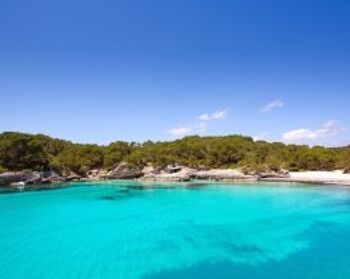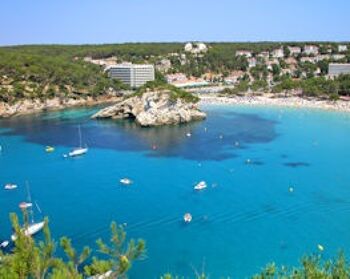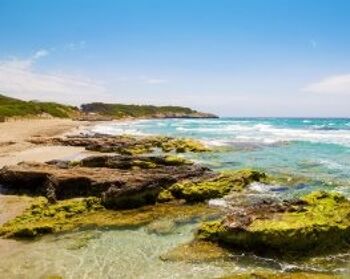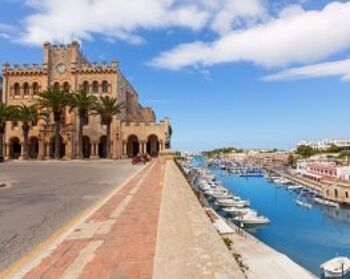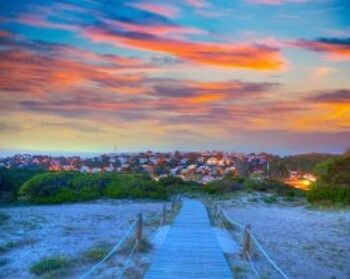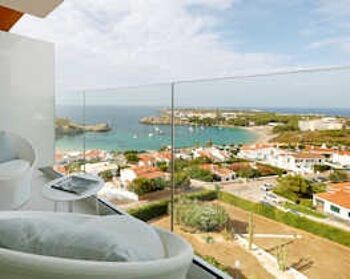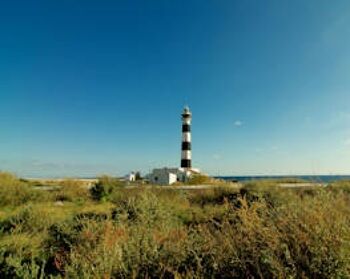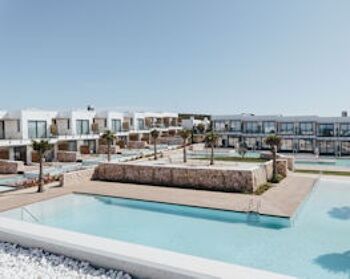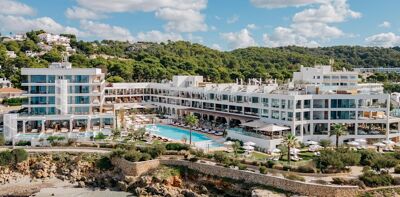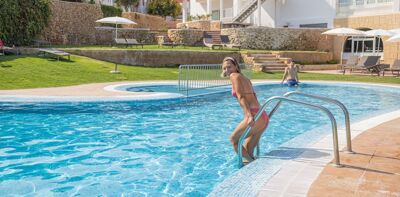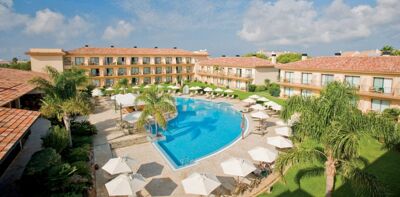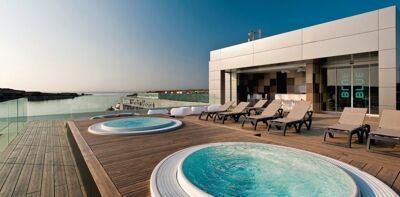Luxury Menorca Holidays
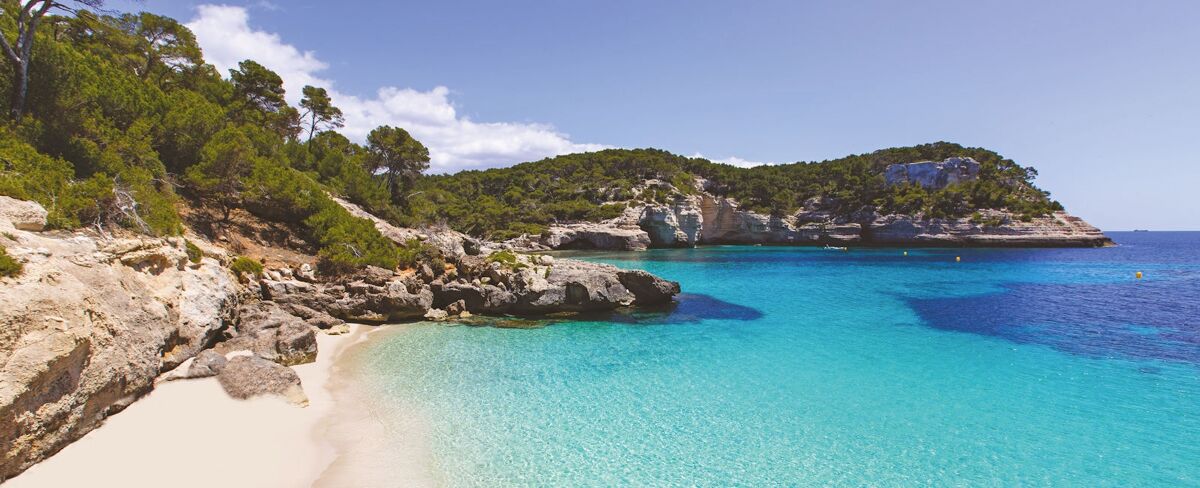
Explore Menorca
The second largest and most north eastern of the Balearic Islands, Menorca differs from the other islands in both climate and landscape. Throughout the course of history, successive changes of fortune have left their mark here, as have the diverse cultural influences of the main people who have occupied the island over the centuries as reflected in the Moorish and Colonial style architecture you will see throughout the island. This past history has endowed Menorca with an original, distinctive character and the island offers a wealth of things to see and do and Menorcans are renowned for their openness, generosity and, as one would expect, their hospitality.
Menorca Beaches
The whole of Menorca's coastline has been declared a protected area which is apparent in the unspoilt countryside and the abundance of soft sand beaches and coves scattered around the island, indeed Menorca offers areas of natural beauty that are almost unsurpassed anywhere else in the Mediterranean.
The most popular beaches are found at the eastern end of the south coast although there are many delightful ones further to the west and in the northeast. Punta Prima, the southernmost beach of Menorca, overlooking Illa de l'Aire is one of the most popular whilst that at Son Bou is the longest.
Fiesta
Each town celebrates its own fiesta, during which the islanders have always exuded their enthusiasm for merriment and today they are joined by the many summer visitors. The fiestas start at the beginning of May in Ferreries and continue around the island throughout the summer reaching a climax in the capital, Mahon's, fiesta of Our Lady of Grace.
By far the most famous of the celebrations and one to which people travel from all over Spain is the fiesta of San Juan in Ciutadella. Menorcan horses perform the Jaleo, where the horse rears up on its back legs, and locals run to touch the stomach of the animal not for the faint hearted!
Cuisine
Menorcan gastronomy is varied but arguably the most famous dish was once referred to as simple fare, nowadays Caldereta de Langosta (lobster stew) is considered food fit for a king and is served at many restaurants throughout the island.
An abundance of seafood as well as grill restaurants and fine dining can be found. Other industries on the island include the production of Menorcan gin and cheese. Dating back to the British occupation of the island Gin Xoriguer is distilled from juniper berries and is mixed with lemon to form the traditional drink, Pomada, which is drunk at the many fiestas celebrated throughout the summer months.
Climate
Menorca enjoys a typical Mediterranean climate with hot daytime temperatures during the summer months of June through to September. Due to its flat terrain a refreshing breeze helps to cool the hot summer days moderating temperatures and providing an added attraction for the considerable number of families who choose Menorca as the destination for their summer holidays. The spring and autumn months of May and October will be cooler and a sweater and a light weight jacket is recommended.
The second largest and most north eastern of the Balearic Islands, Menorca differs from the other islands in both climate and landscape. Throughout the course of history, successive changes of fortune have left their mark here, as have the diverse cultural influences of the main people who have occupied the island over the centuries as reflected in the Moorish and Colonial style architecture you will see throughout the island. This past history has endowed Menorca with an original, distinctive character and the island offers a wealth of things to see and do and Menorcans are renowned for their openness, generosity and, as one would expect, their hospitality.
Menorca Beaches
The whole of Menorca's coastline has been declared a protected area which is apparent in the unspoilt countryside and the abundance of soft sand beaches and coves scattered around the island, indeed Menorca offers areas of natural beauty that are almost unsurpassed anywhere else in the Mediterranean.
The most popular beaches are found at the eastern end of the south coast although there are many delightful ones further to the west and in the northeast. Punta Prima, the southernmost beach of Menorca, overlooking Illa de l'Aire is one of the most popular whilst that at Son Bou is the longest.
Fiesta
Each town celebrates its own fiesta, during which the islanders have always exuded their enthusiasm for merriment and today they are joined by the many summer visitors. The fiestas start at the beginning of May in Ferreries and continue around the island throughout the summer reaching a climax in the capital, Mahon's, fiesta of Our Lady of Grace.
By far the most famous of the celebrations and one to which people travel from all over Spain is the fiesta of San Juan in Ciutadella. Menorcan horses perform the Jaleo, where the horse rears up on its back legs, and locals run to touch the stomach of the animal not for the faint hearted!
Cuisine
Menorcan gastronomy is varied but arguably the most famous dish was once referred to as simple fare, nowadays Caldereta de Langosta (lobster stew) is considered food fit for a king and is served at many restaurants throughout the island.
An abundance of seafood as well as grill restaurants and fine dining can be found. Other industries on the island include the production of Menorcan gin and cheese. Dating back to the British occupation of the island Gin Xoriguer is distilled from juniper berries and is mixed with lemon to form the traditional drink, Pomada, which is drunk at the many fiestas celebrated throughout the summer months.
Climate
Menorca enjoys a typical Mediterranean climate with hot daytime temperatures during the summer months of June through to September. Due to its flat terrain a refreshing breeze helps to cool the hot summer days moderating temperatures and providing an added attraction for the considerable number of families who choose Menorca as the destination for their summer holidays. The spring and autumn months of May and October will be cooler and a sweater and a light weight jacket is recommended.
Average Temperatures
Average amount of daylight in hours
Lorem 6 ipsum dolor sit amet consectetur adipisicing elit. Architecto earum neque, nihil, eos quaerat modi magnam et recusandae, consequuntur hic accusantium sapiente itaque praesentium atque! Quisquam nemo accusamus doloribus quis laborum illo magni aliquam non architecto aperiam dolores, excepturi fugiat ut aliquid quaerat, minima porro maiores, sint molestias voluptate. Facilis repudiandae labore cupiditate odit alias ex nesciunt laboriosam quam ipsam veritatis at quia unde consectetur quos inventore hic vel consequuntur dolorem assumenda deserunt vitae vero obcaecati, adipisci dolore. Nihil soluta cum placeat, doloremque eius ea rem mollitia, cupiditate voluptatem vitae sequi facilis quod numquam aliquid, repellendus odit quasi tempora suscipit!
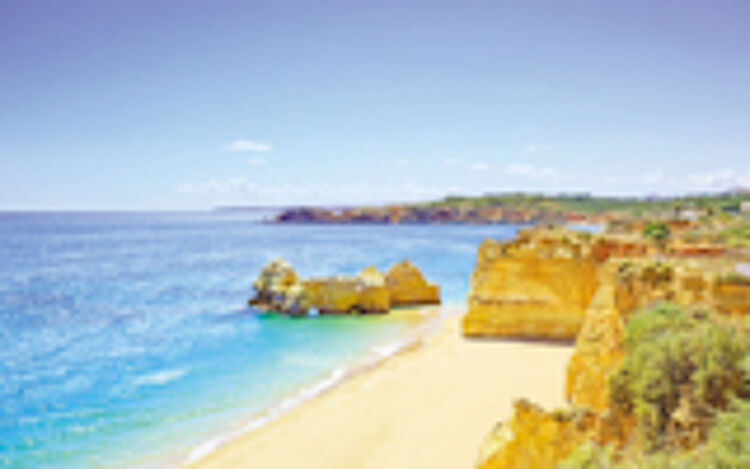 Algarve
Algarve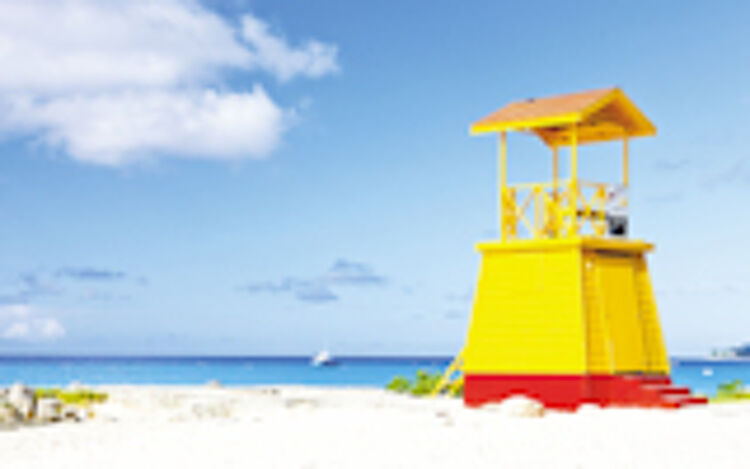 Barbados
Barbados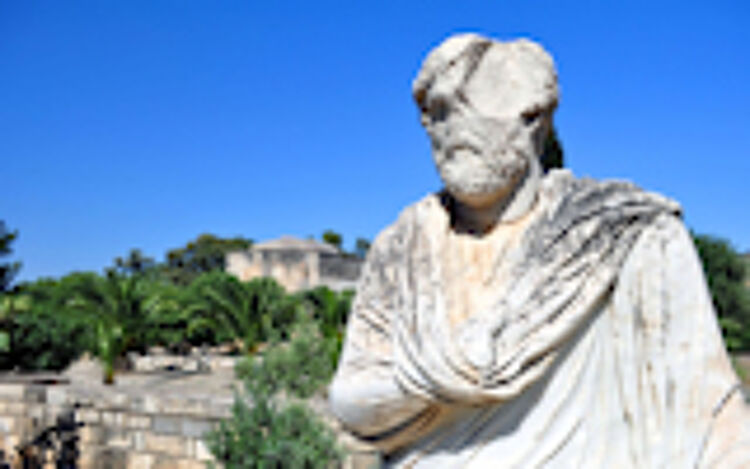 Crete
Crete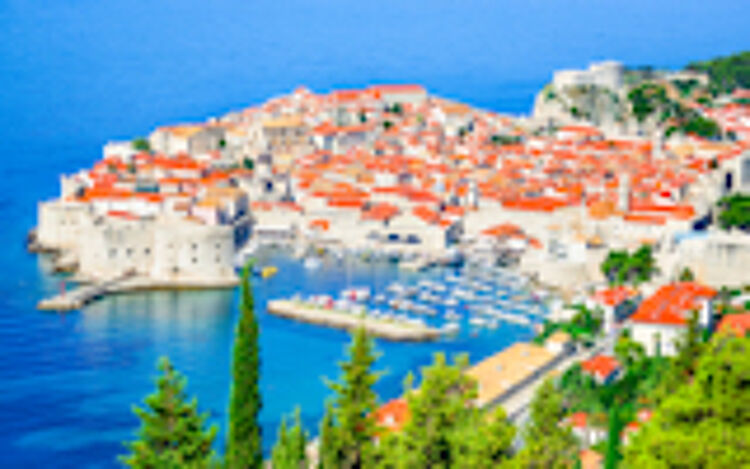 Croatia
Croatia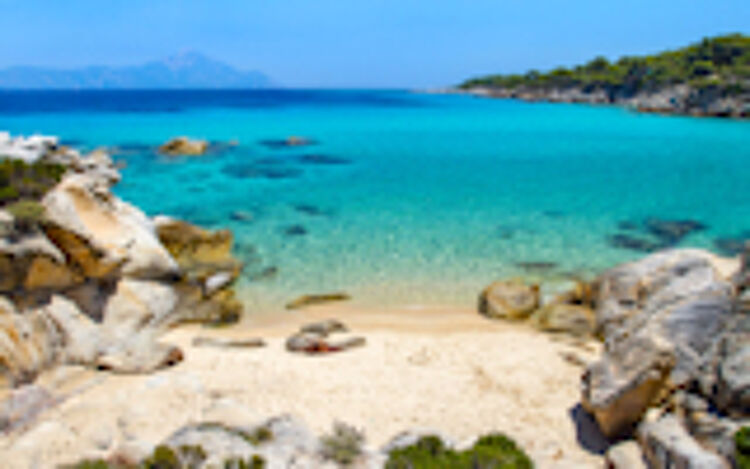 Halkidiki
Halkidiki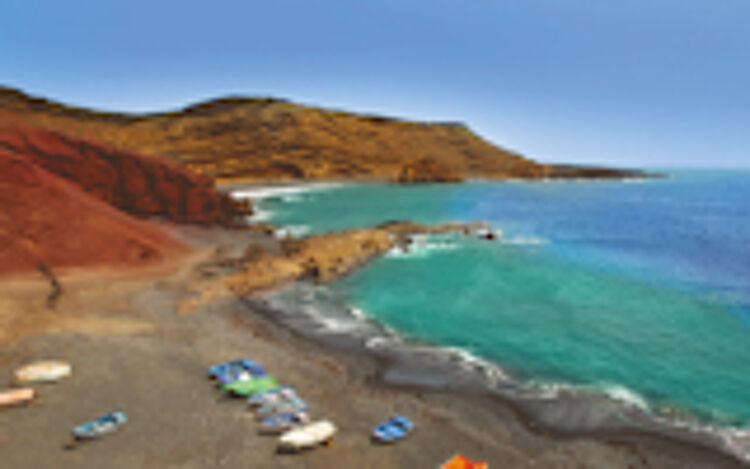 Lanzarote
Lanzarote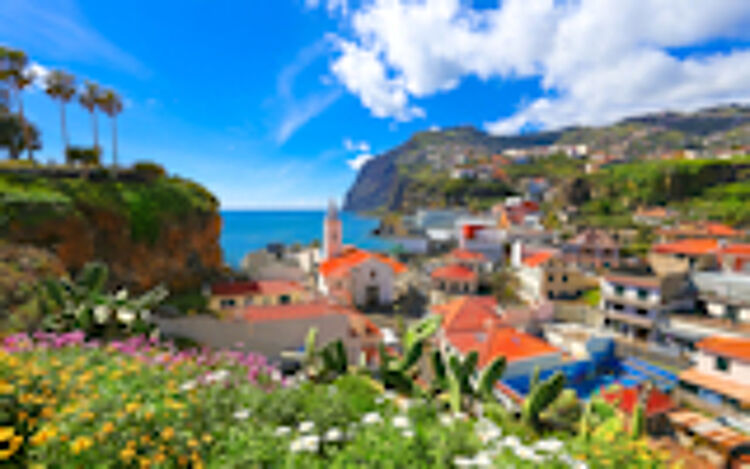 Madeira
Madeira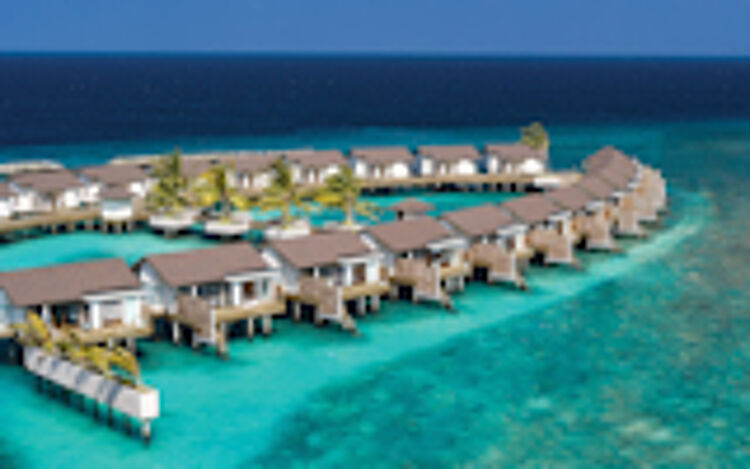 Maldives
Maldives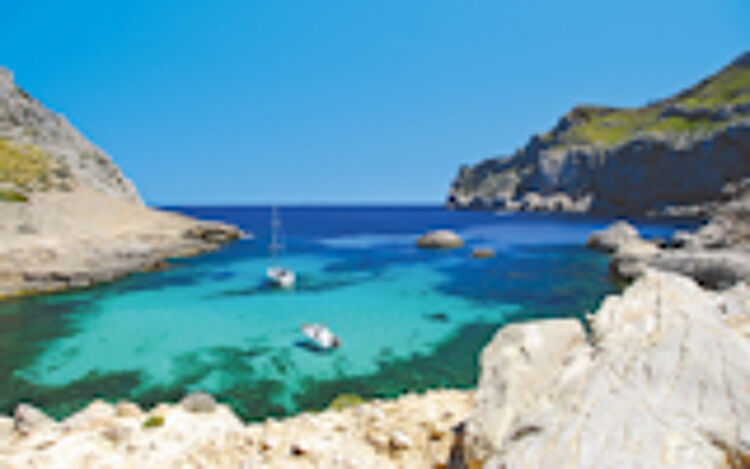 Mallorca
Mallorca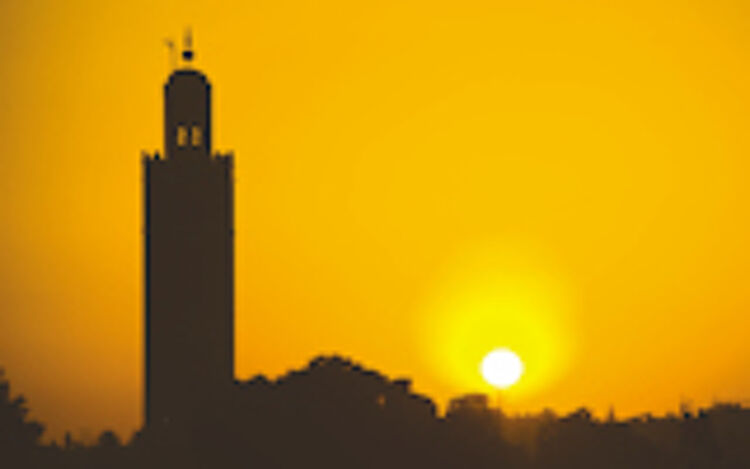 Morocco
Morocco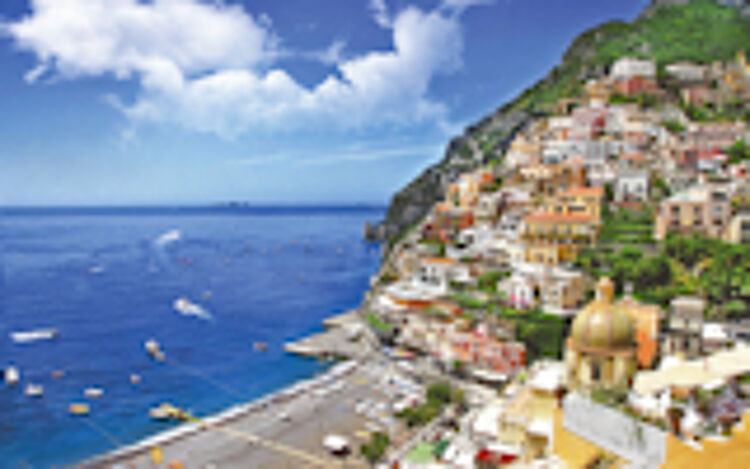 Sorrento & Amalfi Coast
Sorrento & Amalfi Coast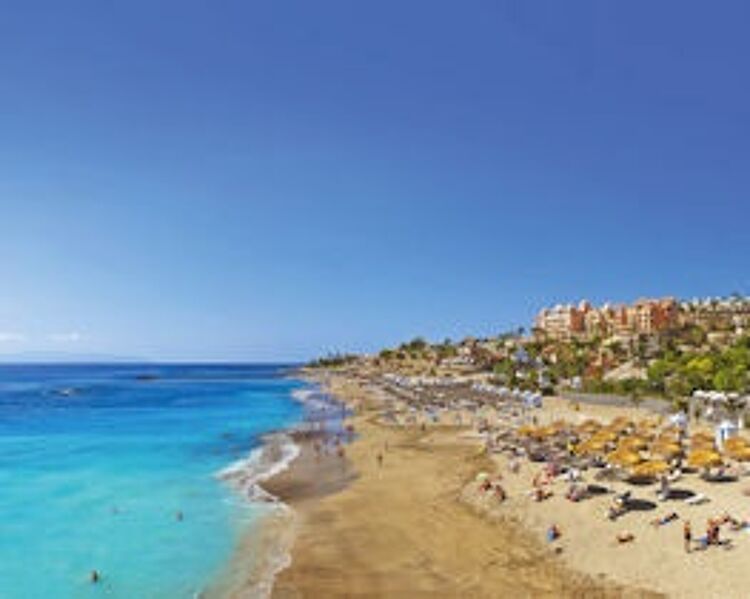 Tenerife
Tenerife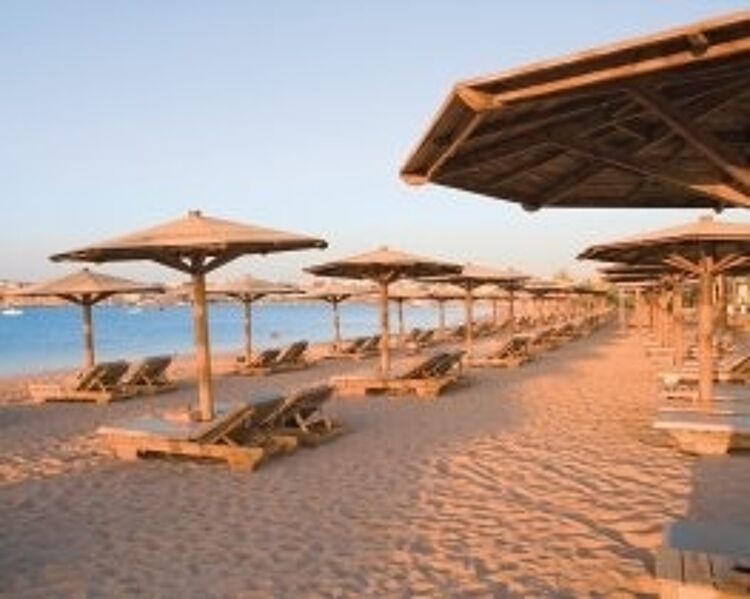 Egypt
Egypt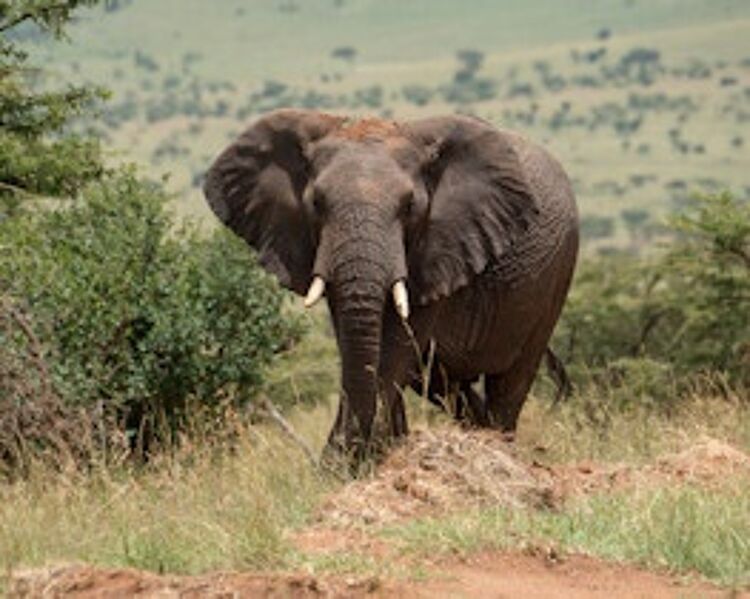 Kenya
Kenya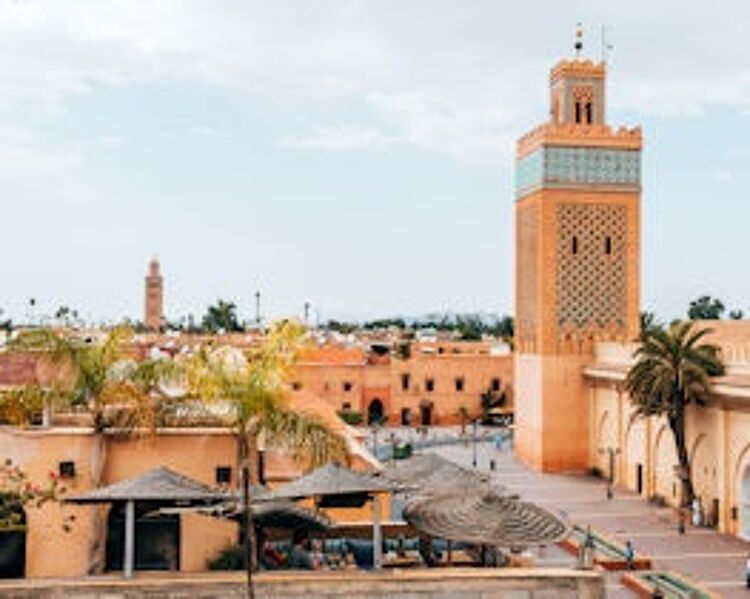 Morocco
Morocco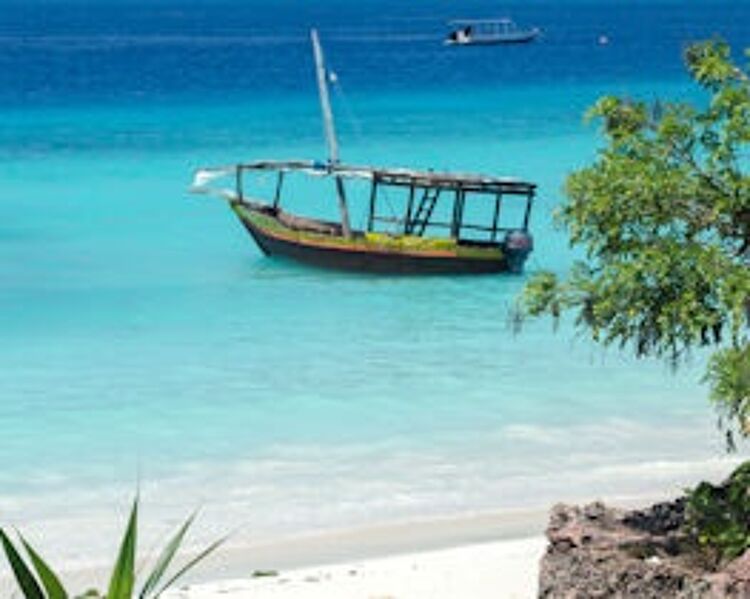 Tanzania
Tanzania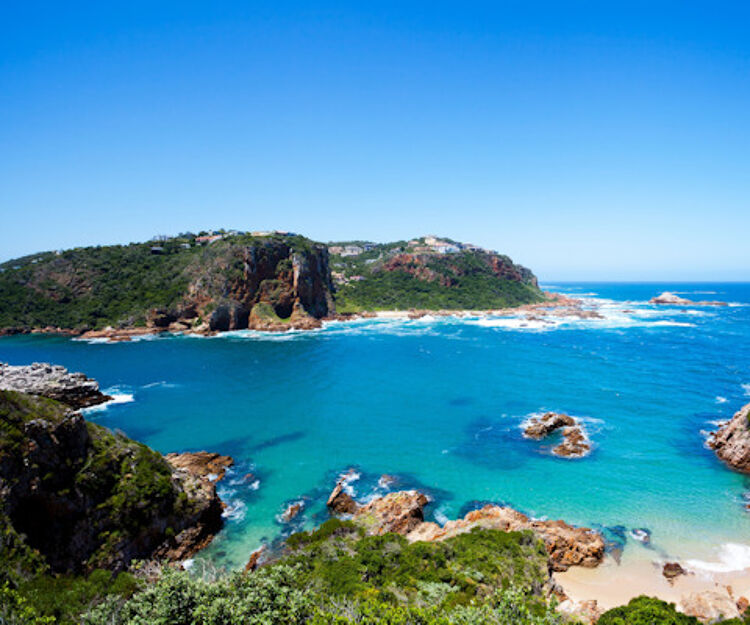 South Africa
South Africa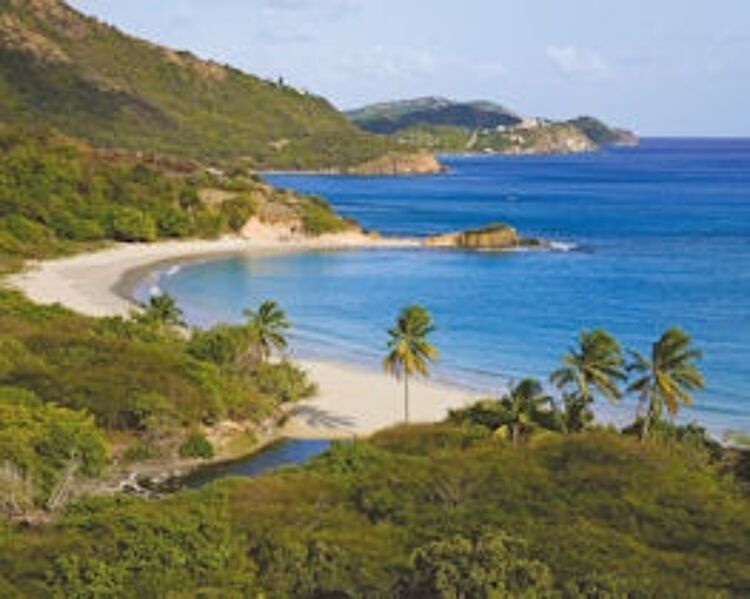 Antigua
Antigua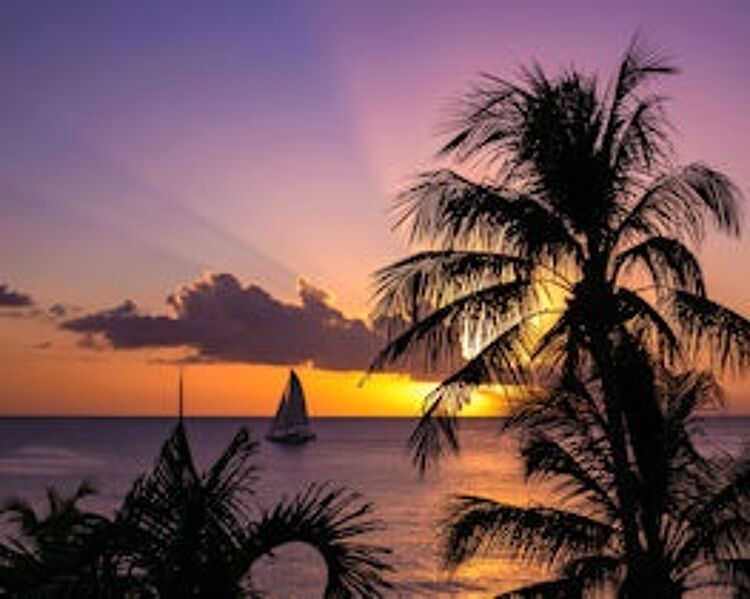 Barbados
Barbados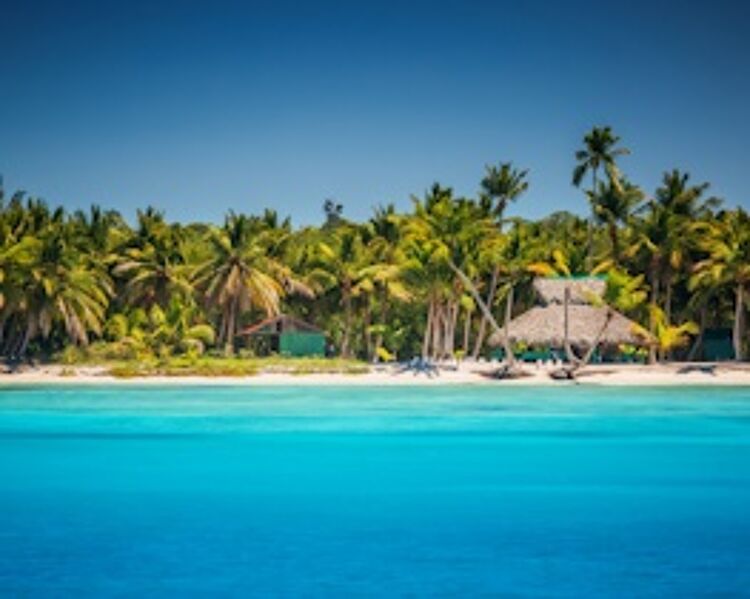 Dominican Republic
Dominican Republic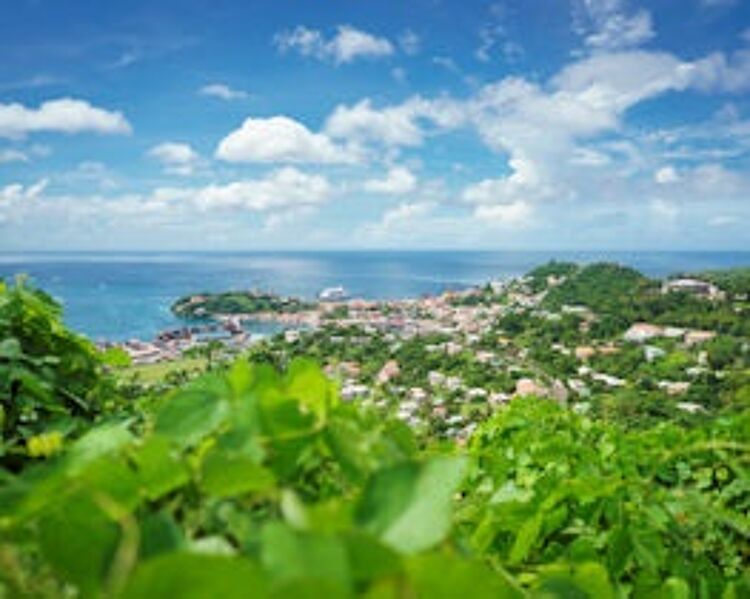 Grenada
Grenada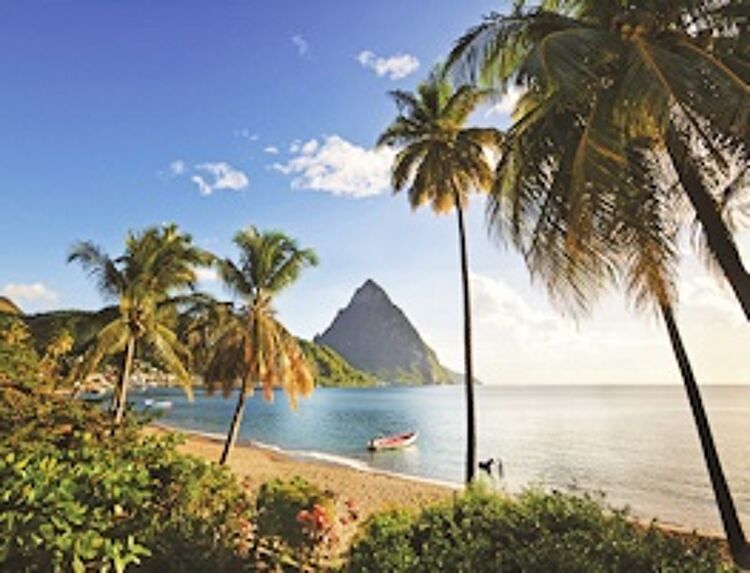 St Lucia
St Lucia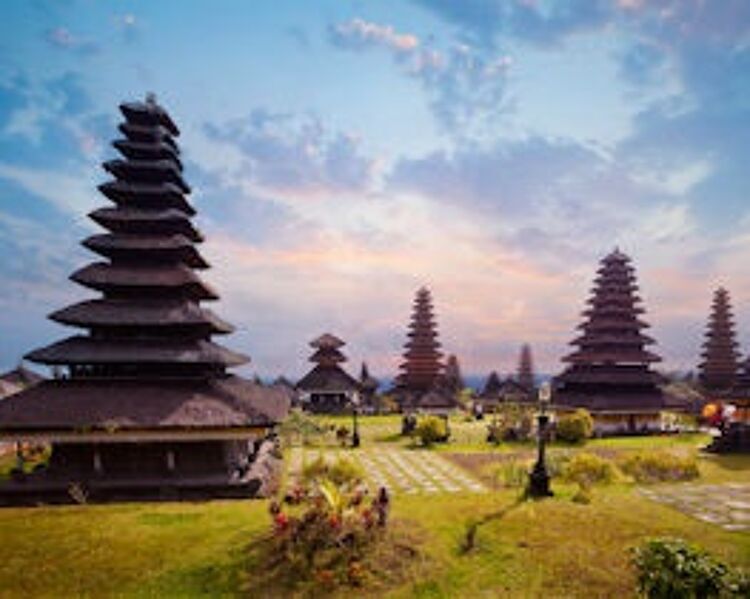 Indonesia
Indonesia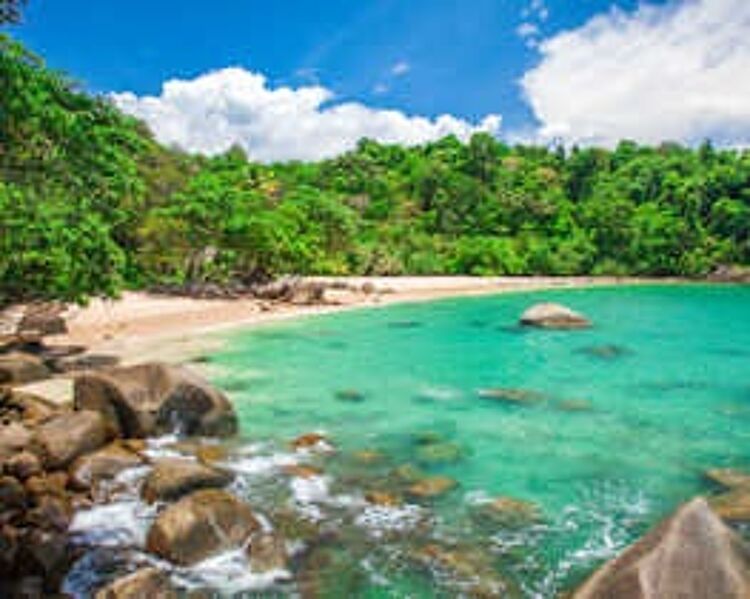 Thailand
Thailand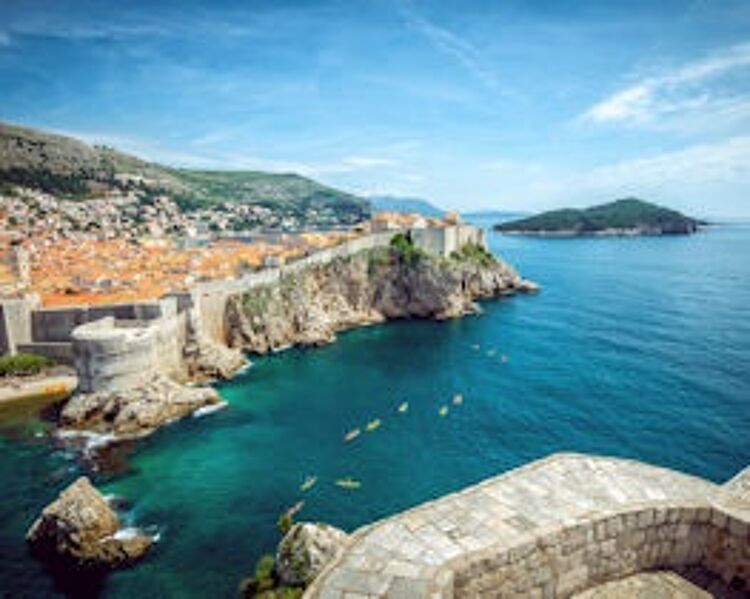 Croatia
Croatia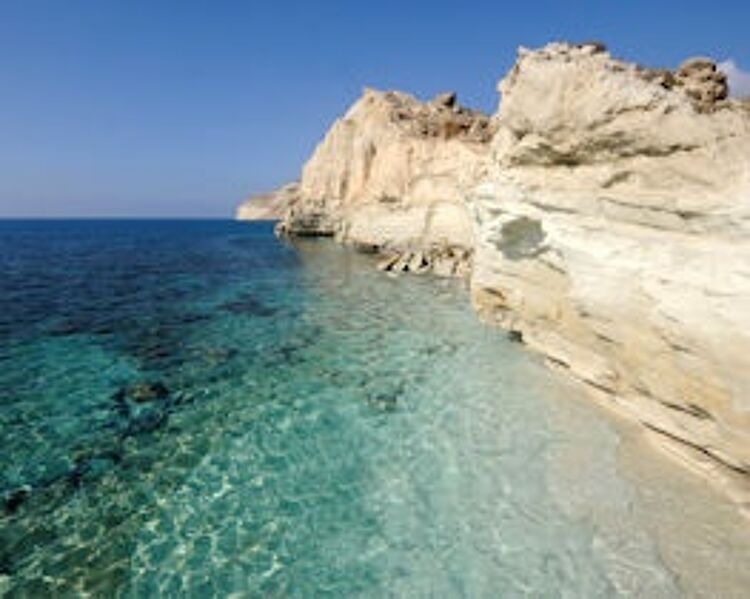 Cyprus
Cyprus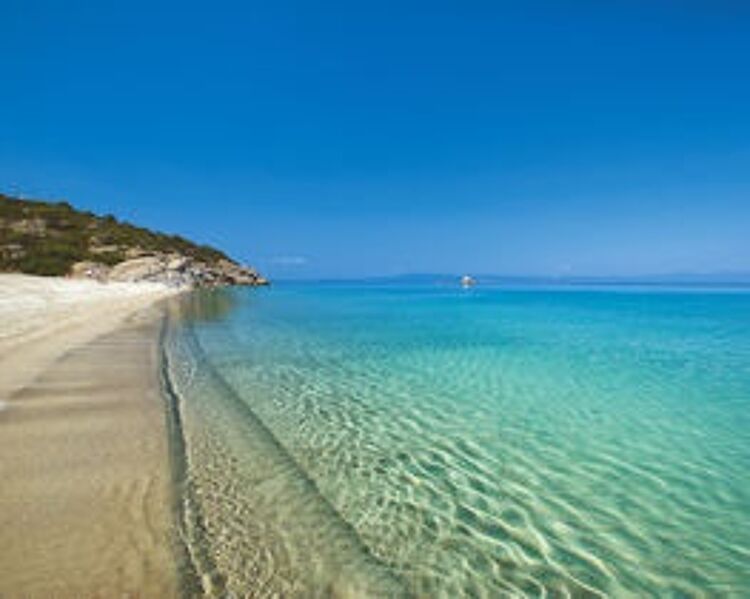 Greece
Greece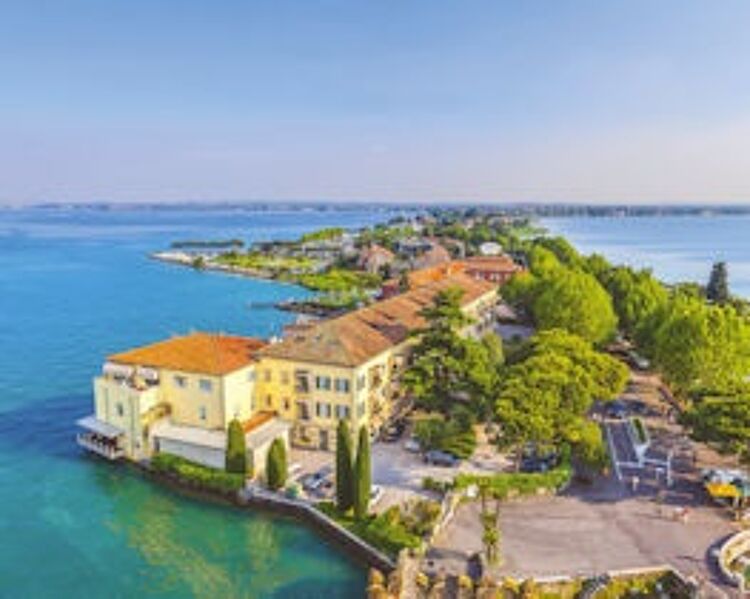 Italy
Italy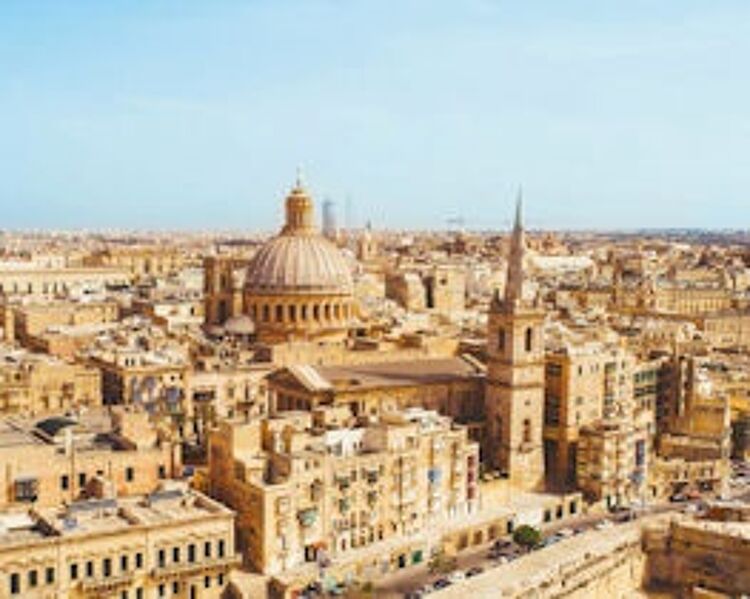 Malta
Malta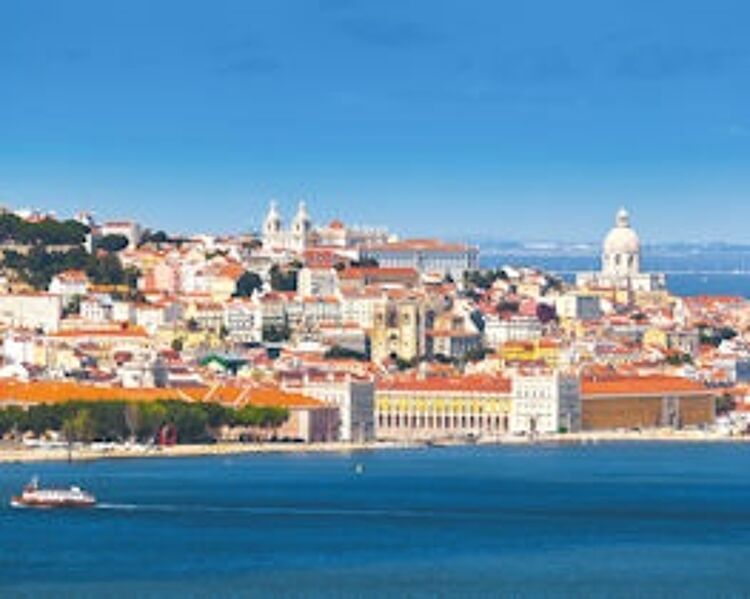 Portugal
Portugal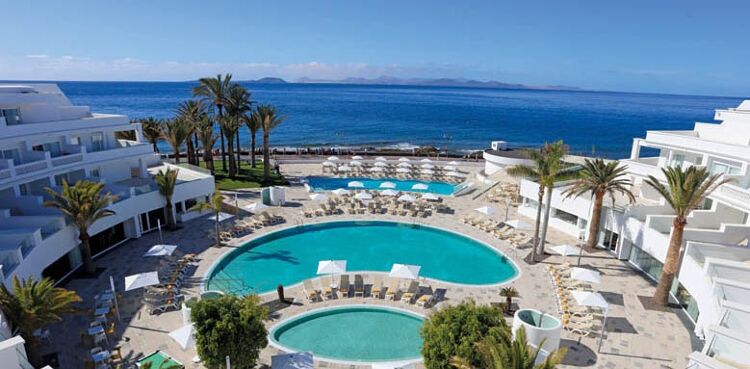 Spain
Spain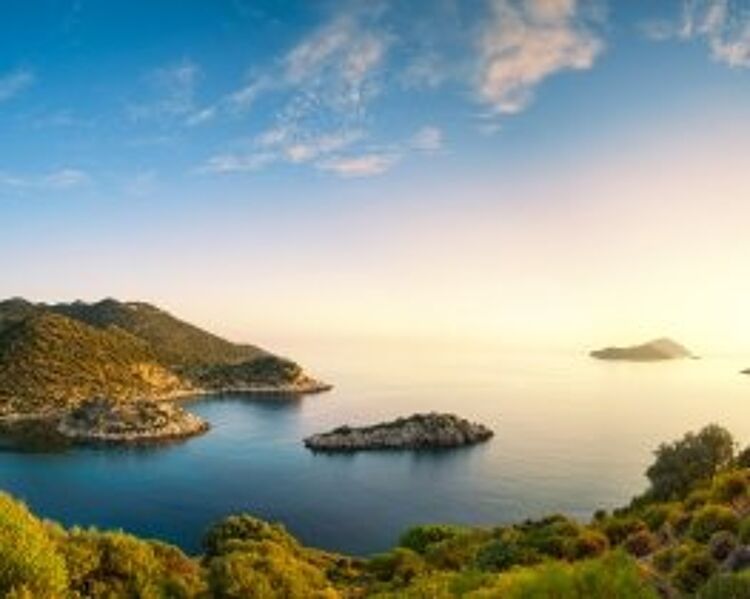 Turkey
Turkey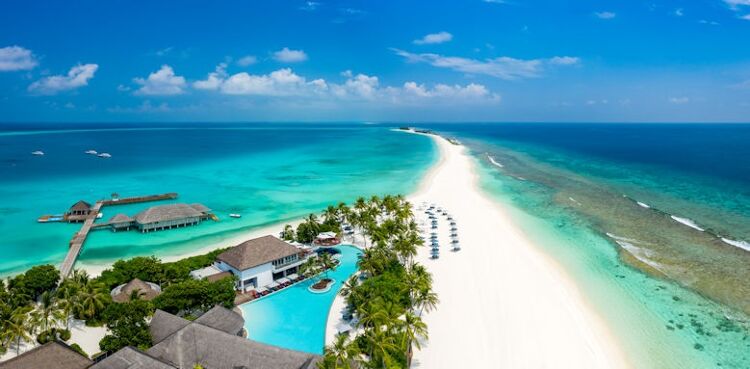 Maldives
Maldives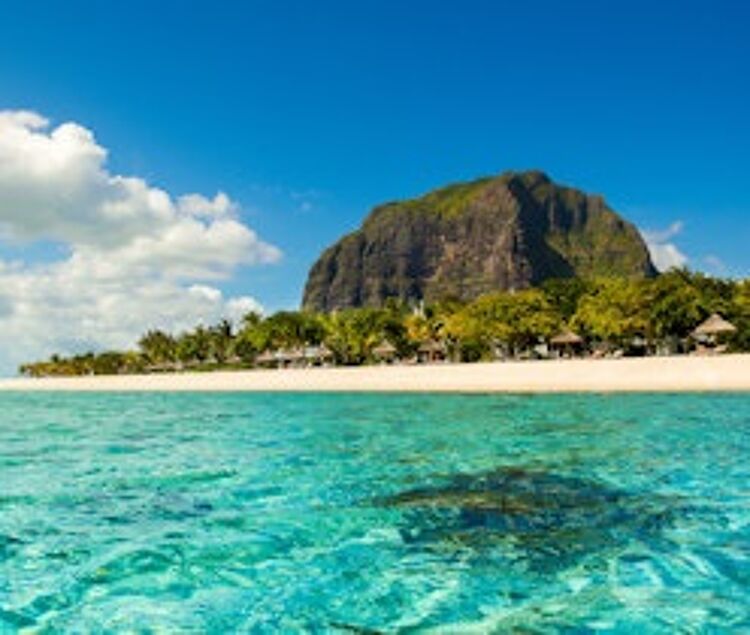 Mauritius
Mauritius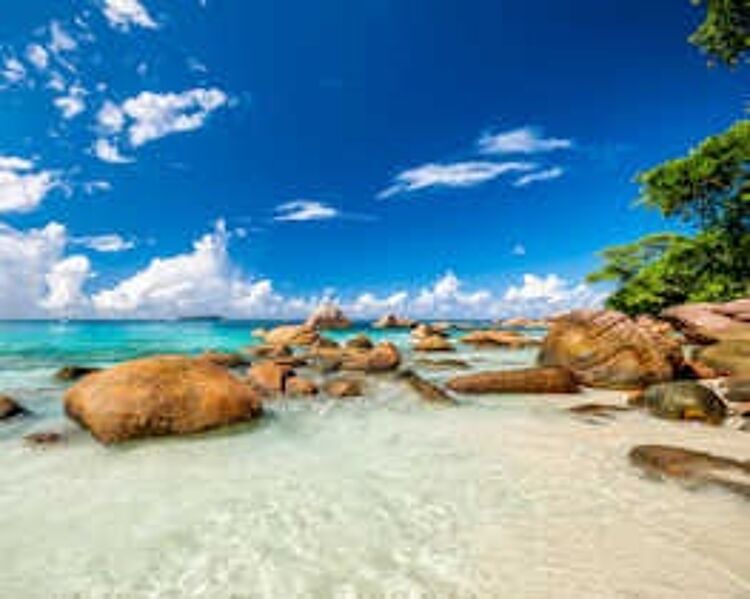 Seychelles
Seychelles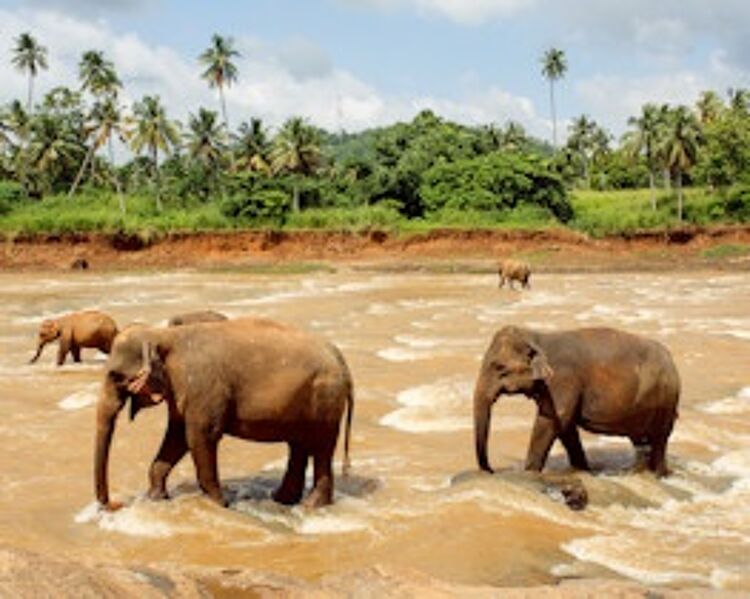 Sri Lanka
Sri Lanka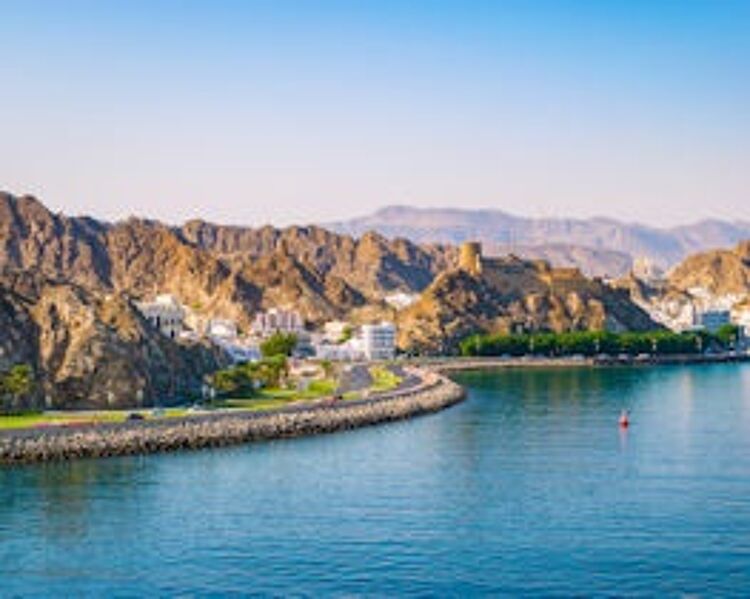 Oman
Oman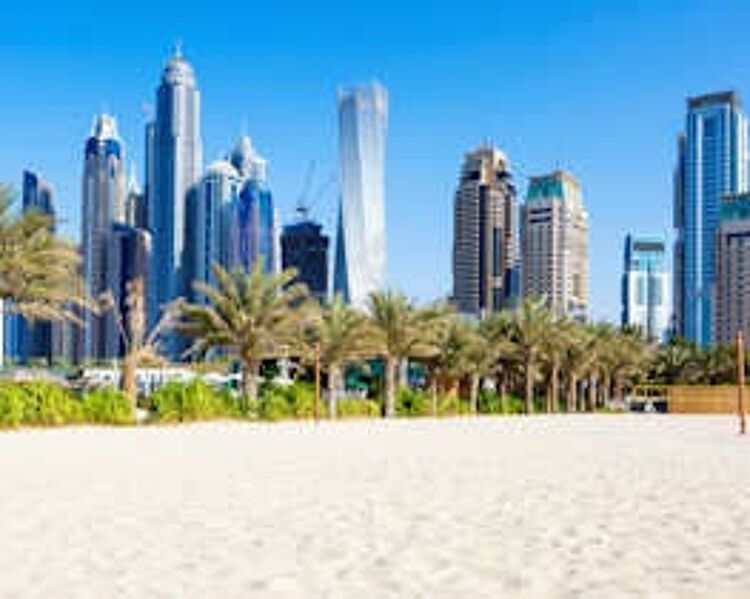 United Arab Emirates
United Arab Emirates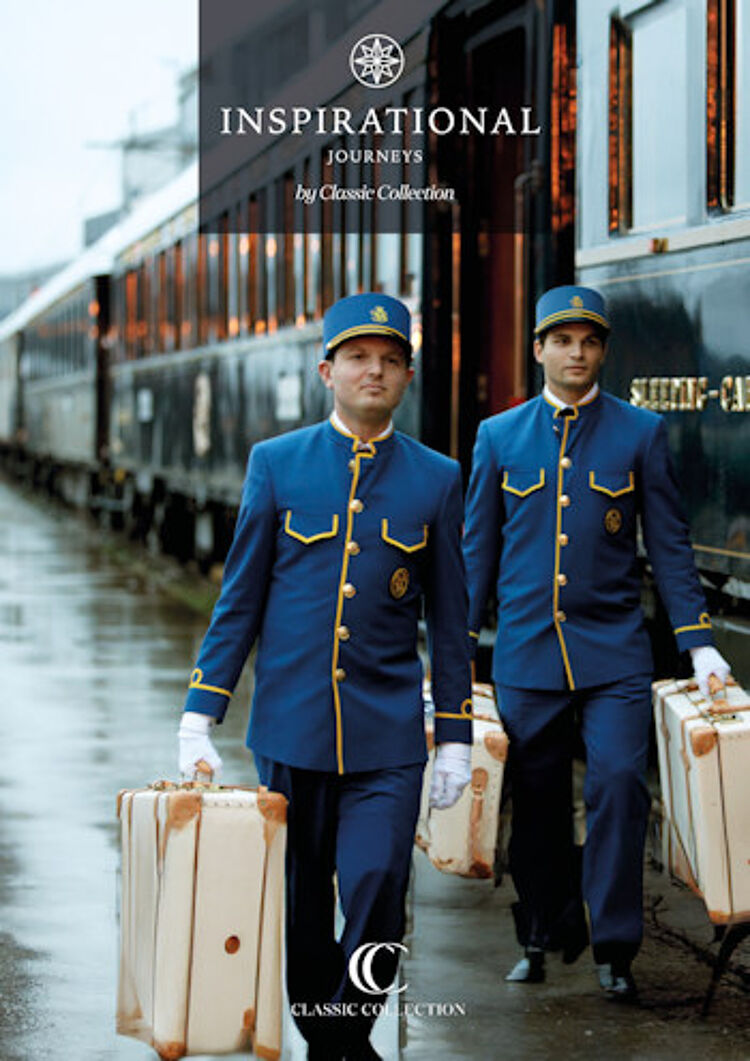
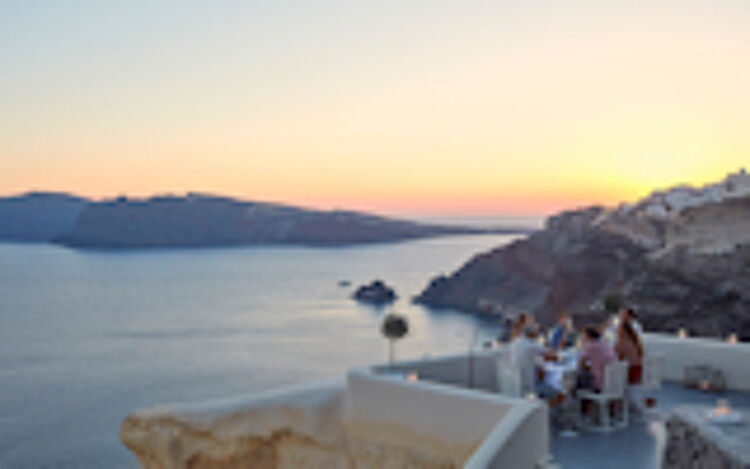 Adult Only Holidays
Adult Only Holidays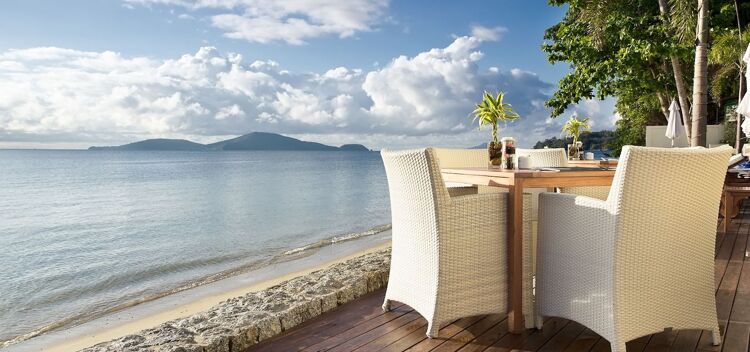 All Inclusive Holidays
All Inclusive Holidays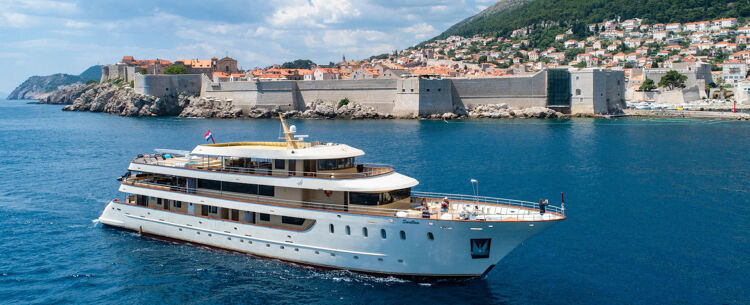 Boutique Cruises
Boutique Cruises Boutique Hotels
Boutique Hotels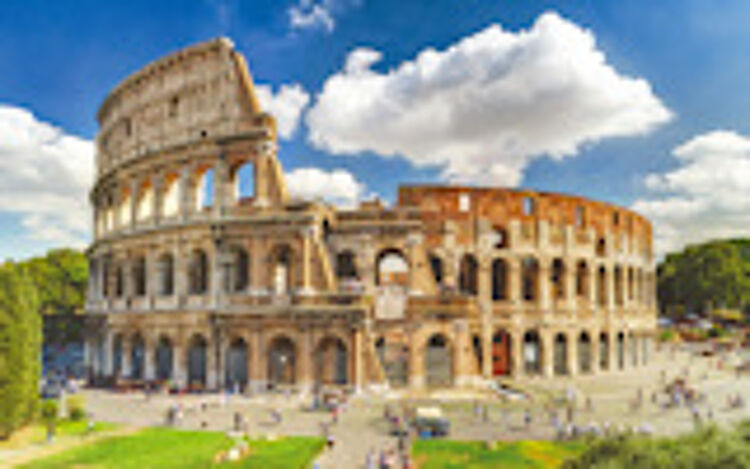 City Breaks
City Breaks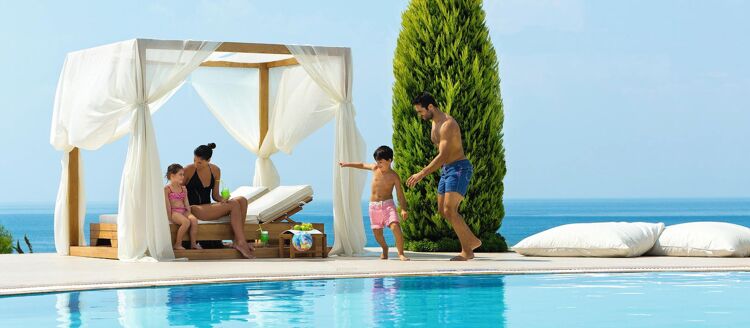 Family Holidays
Family Holidays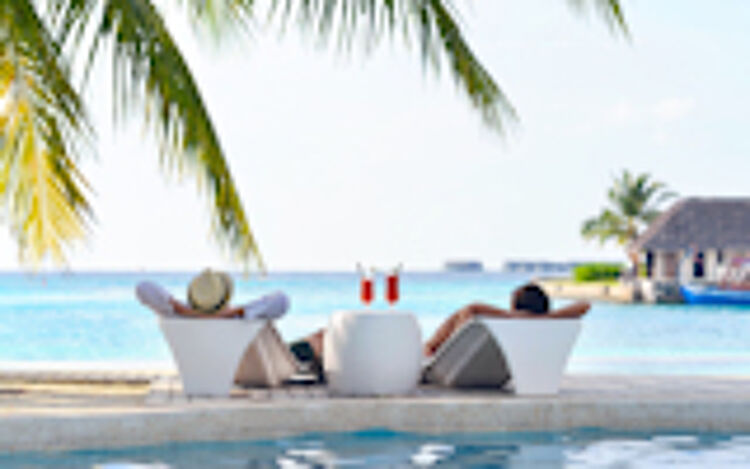 Honeymoon Holidays
Honeymoon Holidays Luxury Rail Holidays
Luxury Rail Holidays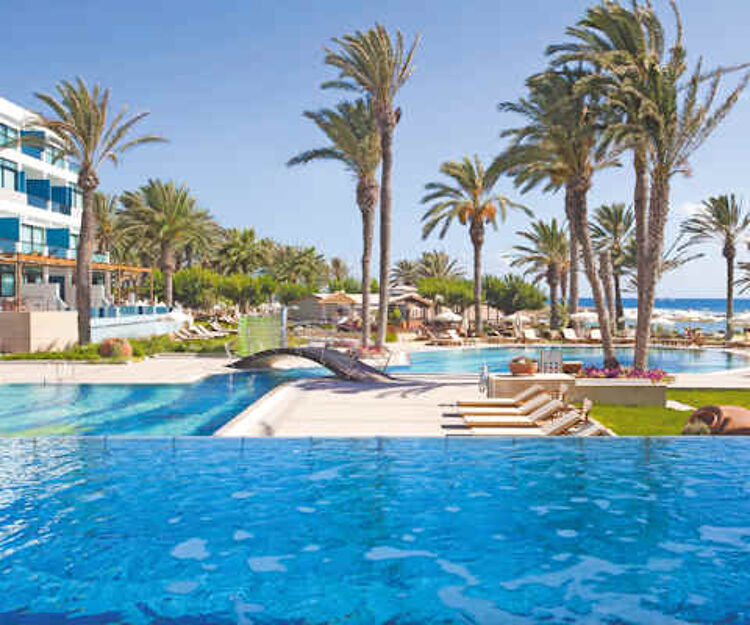 Multi Centre Holidays
Multi Centre Holidays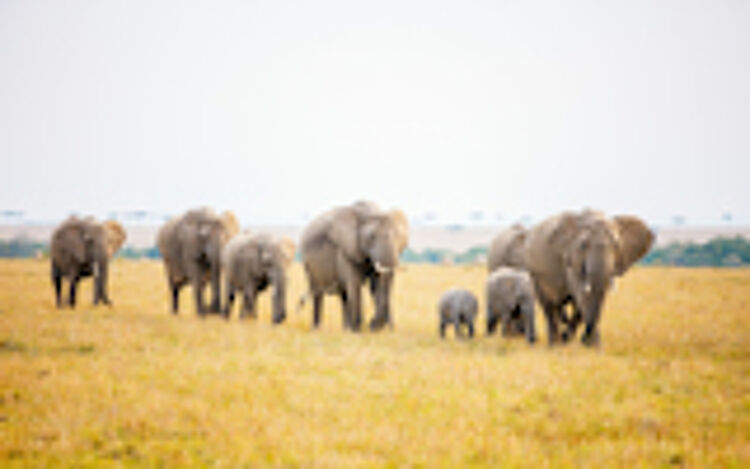 Private & Escorted Tours
Private & Escorted Tours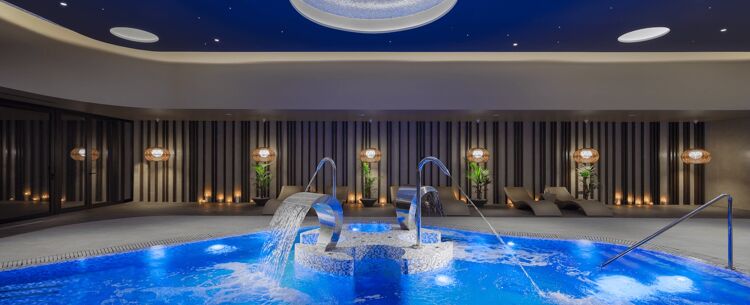 Spa & Wellness Holidays
Spa & Wellness Holidays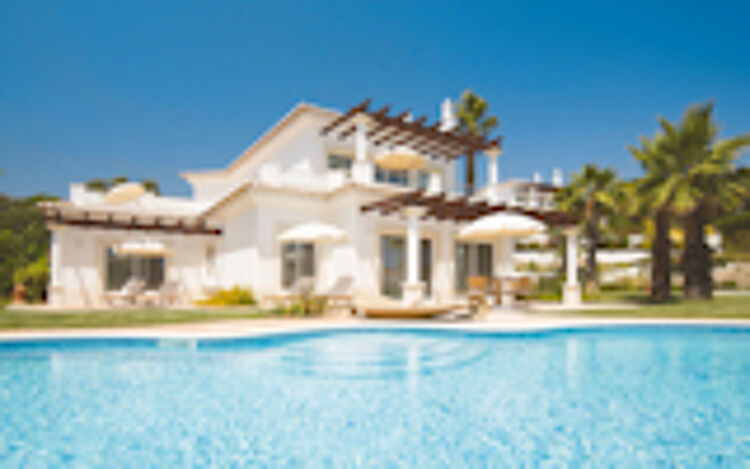 Villa Holidays
Villa Holidays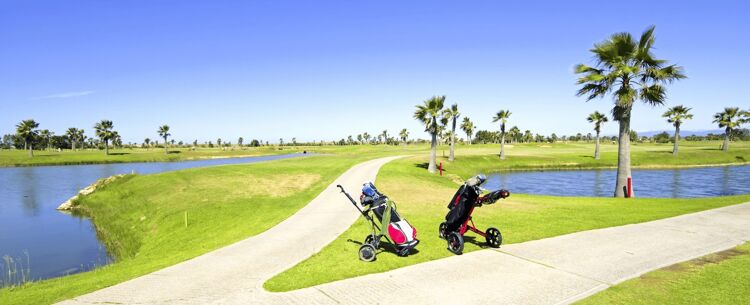 Golf Holidays
Golf Holidays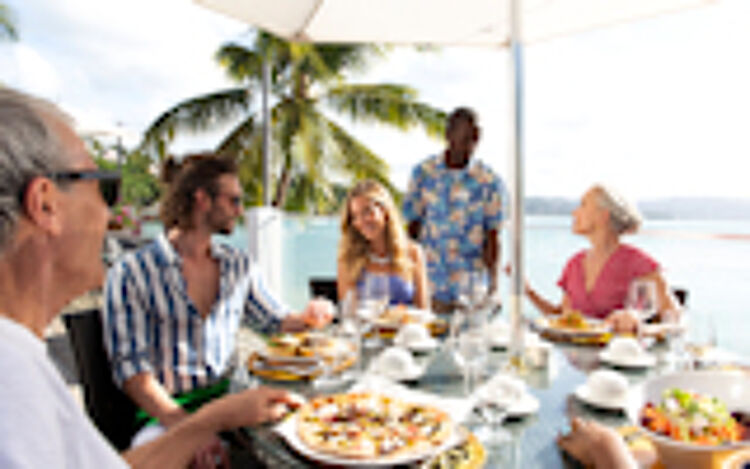 Group Holidays
Group Holidays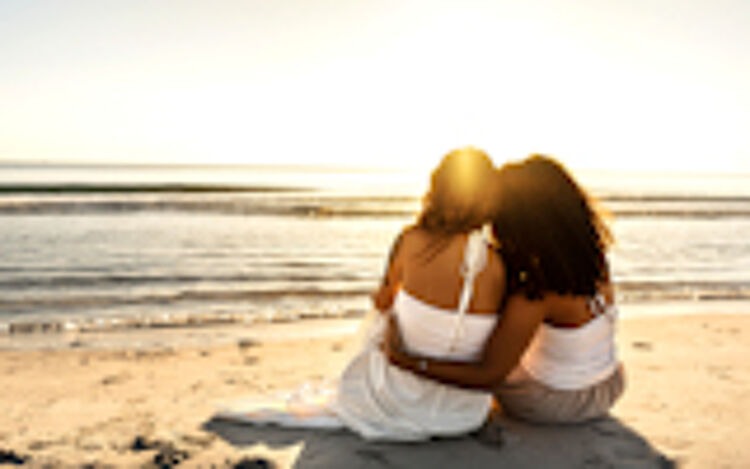 LGBTQ+ Luxury Holidays
LGBTQ+ Luxury Holidays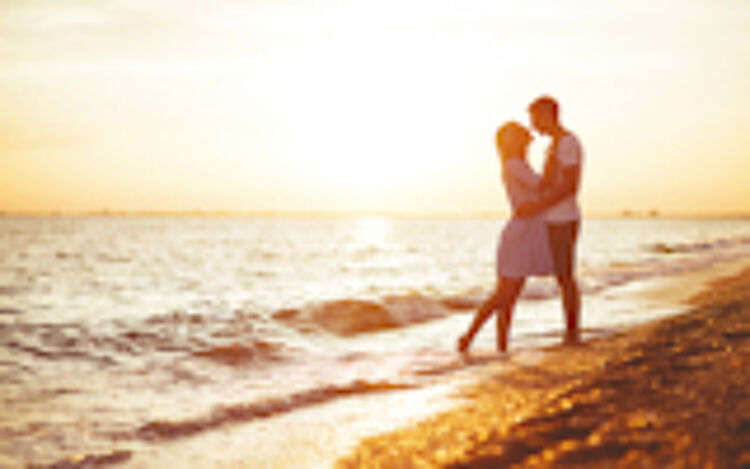 Romantic Holidays
Romantic Holidays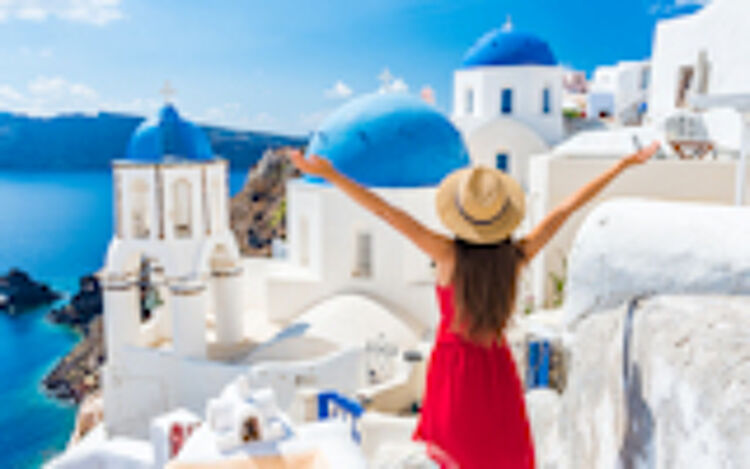 Greek Island Hopping
Greek Island Hopping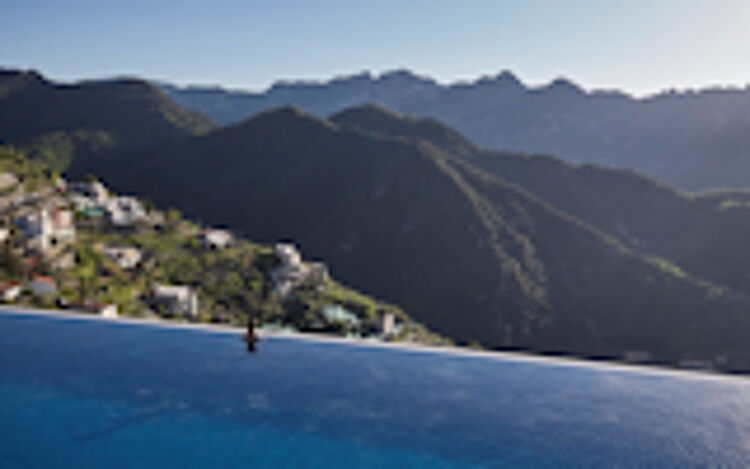 Infinity Pools
Infinity Pools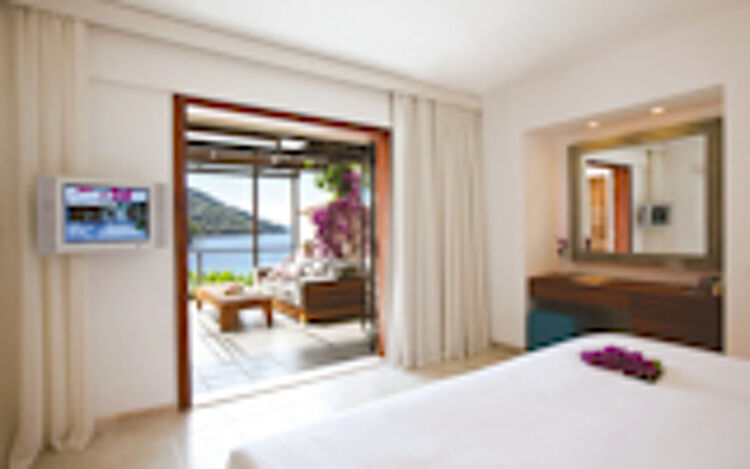 Interconnecting Rooms
Interconnecting Rooms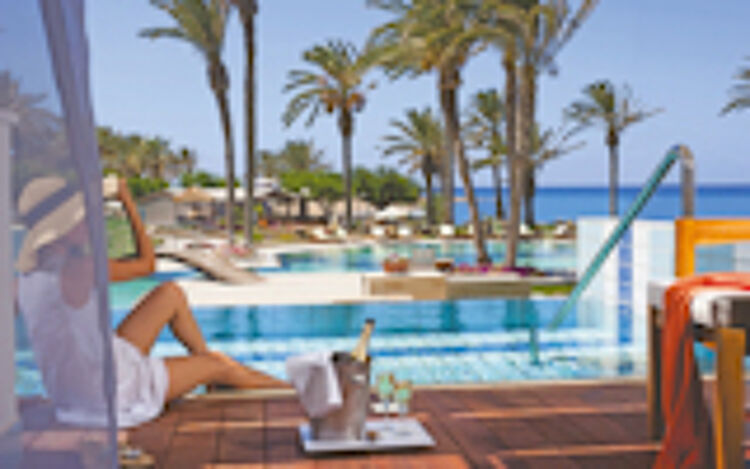 Private Pools
Private Pools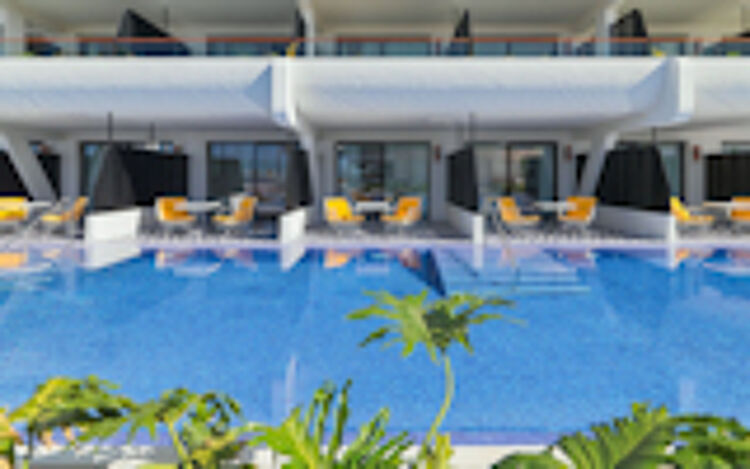 Swim Up Rooms
Swim Up Rooms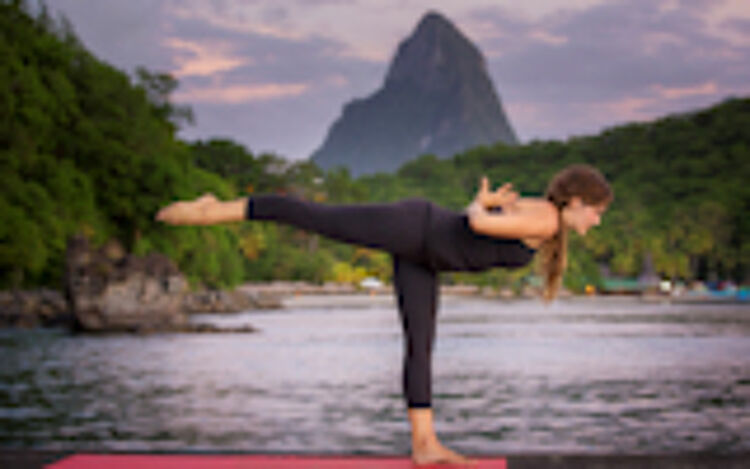 Yoga Classes
Yoga Classes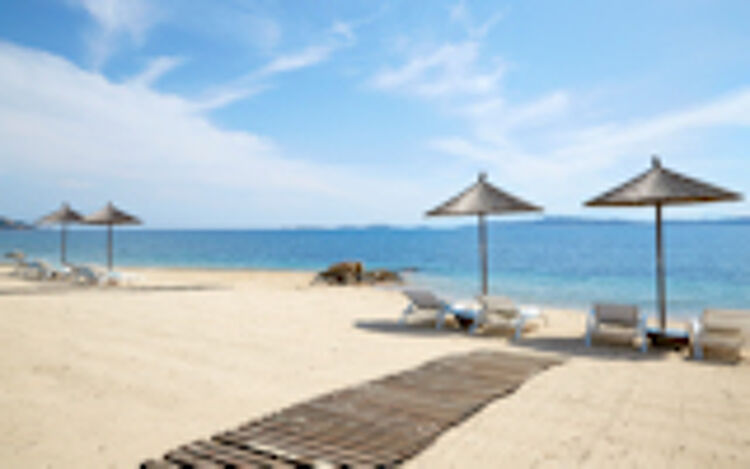 Blue Flag Beaches
Blue Flag Beaches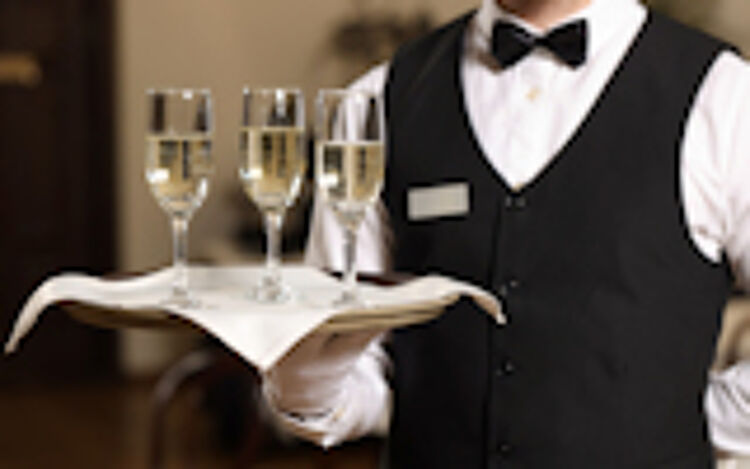 Butler Service
Butler Service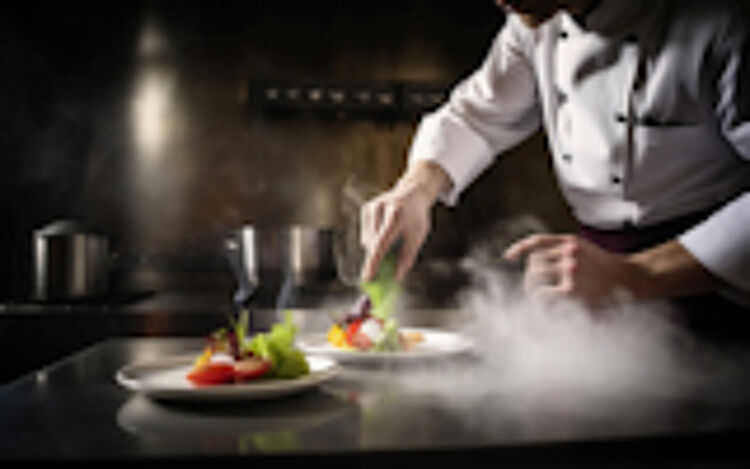 Michelin Star Dining
Michelin Star Dining